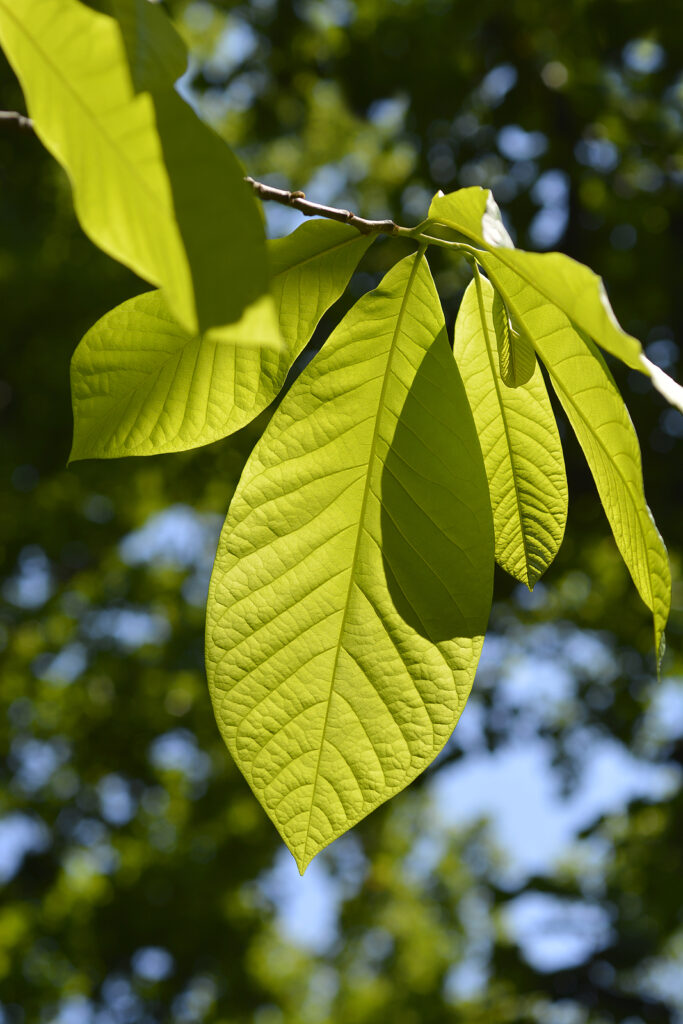Asimina–commonly called pawpaw–is grown for its tropical foliage and edible fruit. Leaves are large and simple. The fruits are six-inch-long, green berries that ripen dark brown in autumn and taste like bananas or vanilla custard. Asimina is sometimes called the Michigan banana.
Asimina is a hardy member of the tropical family that includes cherimoya. The genus includes 8 species of deciduous evergreen shrubs and small trees. The variety commonly grown in gardens is Asimina triloba.
Asimina bears striking flowers in spring. It is suitable for shrub borders or sunny woodland clearing. Asimina triloba is often grown as a multi-stemmed shrub.

Get to know Asimina
- Plant type: Deciduous and evergreen shrubs or small trees
- Growing zones and range: Zones 6 to 8
- Hardiness: Hardy to Zone 6
- Height and width: 20 feet (6m) tall and wide
- Form and habit: Broad and spreading
- Foliage: Leaves are oval, somewhat drooping, 4-10 inches (10-25cm) long, medium green, turning bright yellow in fall; foliage has an unpleasant odor when crushed
- Flowers: Large but not showy, purplish or brownish (sometimes green), with three prominent petals
- Fruits: Roughly oval, yellowish green turning brown, 3-5 inches (8-13cm) long; the soft, custard-like flesh has a flavor somewhat like that of banana and a number of large brown seeds
- Bloom time: Spring
- Uses: Shrub border, sunny woodland clearing
- Common name: Pawpaw
- Botanical name: Asimina
- Family name: Annonaceae
- Origin: Southern parts of Eastern North America
Where to plant Asimina
- Plant Asimina in full sun, except as noted.
- Plant Asimina in moist but well-drained, fertile, humus-rich, neutral to acidic soil.
When to plant Asimina
- Asimina can be difficult to transplant, so is best transplanted as a small balled-and-burlapped or container plant.
- Sow Asimina seed in autumn in a seedbed, or stratify in moist sand at 41°F (5°C) for 90 days, and sow in spring.
Planting and spacing Asimina
- Plant Asimina deep enough to accommodate its long root structure.
- Plant Asimina 20 feet (6m) apart.
How to water and feed Asimina
- Give Asimina regular water.
- Feed Asimina with an all-purpose organic fertilizer in spring.
How to care for Asimina
- Prune Asimina suckers to maintain it as a single-trunked specimen.
Asimina pests and diseases
- Asimina are susceptible to leaf blotch, eye spot, and other fungal leaf diseases.
Asimina propagation
- Layer in autumn or insert root cuttings in winter.
Asimina varieties to grow
- Asimina triloba, Pawpaw, deciduous shrub or small tree with obovate, mid-green leaves, to 12 inches (30cm) long, turning yellow to coppery red in autumn. Cup-shaped flowers, 1.25-2 inches (3-5cm) across, each with 3 large calyx lobes surrounding 6 purple-brown petals (3 large and 3 small), are borne singly or in small clusters in late spring. Ovoid to bottle-shaped, edible, sweet fruit, to 5 inches (13cm) long, are yellow-green, ripening to yellow-brown. To 20 feet (6m) tall and wide. Eastern United States.















